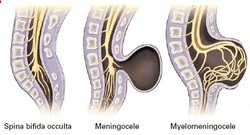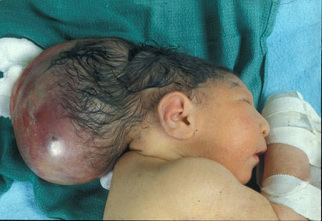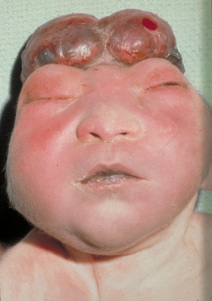|
|
Pathology definition - Neural Tube Defects

Neural tube defects
Defects of the neural tube is associated with folate deficiency that occur during the early period gestation.
Neural tube defect includes encephalocele. Encephalocele is presented as outpouching of the brain through the skull. Encephalocele occur due to the weaknes and the defect of the cranium.
Spina bifida is one of the neural tube defect. It may lead to herniation of the meninges due to defect of the vertebral bony. This is known as meningocele. Meningomyelocele may present with neurological deficit which occur due to herniation of meninges as well as the spinal cord. Spina bifida mostly occur due to the failure of closure of the posterior end of the neural tube. Spina bifida is the midler form of neural tube defect. The patient appears to be asymptomatic initially before starting to develop neurological symptoms.
Anencephaly is another condition which is opposite to spina bifida. Anencephaly is the failure of the closure of the anterior end of the neural tube. Anencephaly may lead to absence of the overlying skull or the brain of the fetus.
References
1.Botto, Lorenzo D., et al. "Neural-tube defects." New England Journal of Medicine 341.20 (1999): 1509-1519.
2.Lemire, Ronald J. "Neural tube defects." JAMA: the journal of the American Medical Association 259.4 (1988): 558-562.
Defects of the neural tube is associated with folate deficiency that occur during the early period gestation.
Neural tube defect includes encephalocele. Encephalocele is presented as outpouching of the brain through the skull. Encephalocele occur due to the weaknes and the defect of the cranium.
Spina bifida is one of the neural tube defect. It may lead to herniation of the meninges due to defect of the vertebral bony. This is known as meningocele. Meningomyelocele may present with neurological deficit which occur due to herniation of meninges as well as the spinal cord. Spina bifida mostly occur due to the failure of closure of the posterior end of the neural tube. Spina bifida is the midler form of neural tube defect. The patient appears to be asymptomatic initially before starting to develop neurological symptoms.
Anencephaly is another condition which is opposite to spina bifida. Anencephaly is the failure of the closure of the anterior end of the neural tube. Anencephaly may lead to absence of the overlying skull or the brain of the fetus.
References
1.Botto, Lorenzo D., et al. "Neural-tube defects." New England Journal of Medicine 341.20 (1999): 1509-1519.
2.Lemire, Ronald J. "Neural tube defects." JAMA: the journal of the American Medical Association 259.4 (1988): 558-562.


